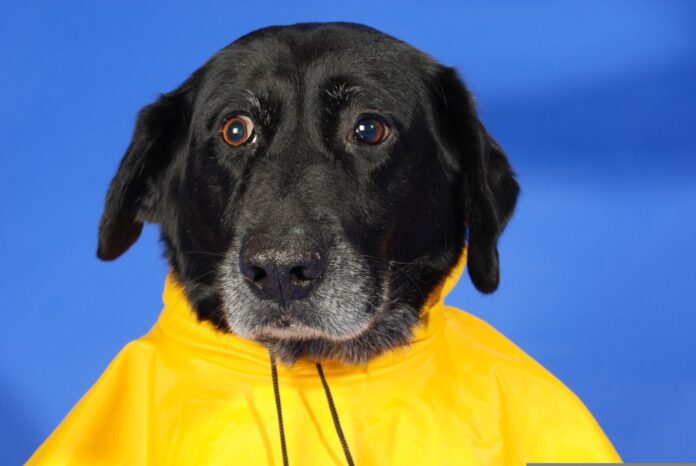We’ve all procrastinated as long as we can, but now it’s August, and hurricane
season is about to enter its most active phase. That means getting serious about
preparations that will keep you and your loved ones safe – including the furry,
scaly, ferrety, fluffy and flying beasties that rely on you to take care of them.
In the hit-and miss-world of hurricanes, you have to hope for the best and plan
for the worst. But leaving your pets behind should never be an option.
As Tiffany Dunsmore of the Florida Keys SPCA says, “If it’s not safe for you, it’s
not safe for your pets.”
Stock up on basic needs
Whether you plan on staying in place or evacuating with your pets, you will need
to stock up on supplies. Do it NOW. Don’t wait until the shelves are empty,
especially if your pet is on a special diet or reliant on medications. Most stores
have limited quantities of specialty foods and vets often need time to order
prescriptions. Emergency preparedness experts advise having enough food,
water and medications on hand for at least two weeks.
The FKSPCA has an excellent hurricane preparedness guide and list of supplies
for pet owners at fkspca.org/humane-education-events/hurricane-preparedness/.

Keep them calm and safe
Pets can get frightened and disoriented in the chaos of a storm. If yours is
spooked easily or anxious in general, consider CBD supplements or ask
your vet for drugs that can help with anxiety. If and when you hit the road, be sure
to take familiar items such as bedding, treats and toys to reduce stress.
We’ve all seen photos of dogs running loose in the streets after a bad hurricane.
An animal’s nervous system is hyper-sensitive to changes in their surroundings,
and this increases their drive to find safety during danger. The hectic activities of
preparing for (and cleaning up after) a storm can provide an opening for them to
get out and take off, so be mindful of where your pet is during these times.
Attach a pet ID tag with your contact information on your pet’s collar. Pet
Supermarket on North Roosevelt Boulevard has a tag machine that
produces personalized tags on the spot. And remember, if your pet is
microchipped, make sure the chip company has your current contact information.
Find a pet-friendly evacuation destination
If an evacuation is called for, do you know where you could stay that will accept
your pet? Don’t assume friends or family will take them. Ask. If you plan on
staying at a hotel, make sure they are pet-friendly. Online sites such as
bringfido.com provide listings of pet-friendly accommodations by state and county.
Prepare for county shelters
All four of Monroe County’s general population shelters take pets: Key West High
School, Sugarloaf School, Coral Shores High School (Tavernier), and Marathon
High School. They accept mammals (dogs, cats, ferrets), pocket pets (hamsters,
gerbils, mice, rats, guinea pigs and rabbits under 10 pounds) as well as reptiles
(snakes, turtles, lizards, etc.) and birds.
The county’s Emergency Management hurricane pet shelter website page offers
comprehensive information about sheltering with a pet at a county shelter. Be
sure to visit the site and read the shelter checklist.
All owners have to read this checklist before signing the shelter agreement,
which must be completed and signed before access is granted. You can find all
the forms and information at monroecounty-fl.gov/938/Pets-at-Shelters.
Know that you cannot drop off an animal and leave. Pets must be accompanied
by owners who are responsible for the care and control of their animals at all
times.
They need to be brought into the shelter in a secure cage or carrier that will serve
as their lodging during the stay. You’ll also have to supply their bedding
materials, bowls, food and water bottles and leashes as well as proof of current
vaccinations.
I was impressed with the details provided in the shelter guidelines. For example,
bird owners are requested to bring not only the usual supplies such as cages and
paper to line it, but leg bands, a picture of the bird and an optional water mister to
mist the bird’s feathers periodically.
The guide mentions that snakes are allowed to be transported in a pillowcase. I
couldn’t get that image out of my head. Can you imagine a cat in line behind the
snake pillowcase? Of course, once in the shelter, they must be moved to more
secure housing. (Hopefully nowhere near the “pocket pets” section.)
Some people think they can drop off their dog or cat at the FKSPCA on the way
out of town, but that is NOT an option. In fact, all pets in the shelter are
evacuated before a hurricane makes landfall.
A network of volunteer emergency foster homes keep shelter animals safe during
storms. The fosters provide care and a safe place to stay, along with the
understanding that they will take the animal with them if they have to evacuate.
The FKSPCA provides food, medication, bedding, toys and treats for the animals
being fostered during storms.
They are currently looking for volunteers to help in this effort. If you want to help
Keys pets during an emergency, contact Foster@fkspca.org for details.
As we all know, it’s too late to do all that needs to be done when a storm is
barreling down the Straits, especially when pets are part of the plan. So do it
now. Not only do they need us, but we need them. During the toughest of times,
the best comfort often comes in small, furry packages.

























